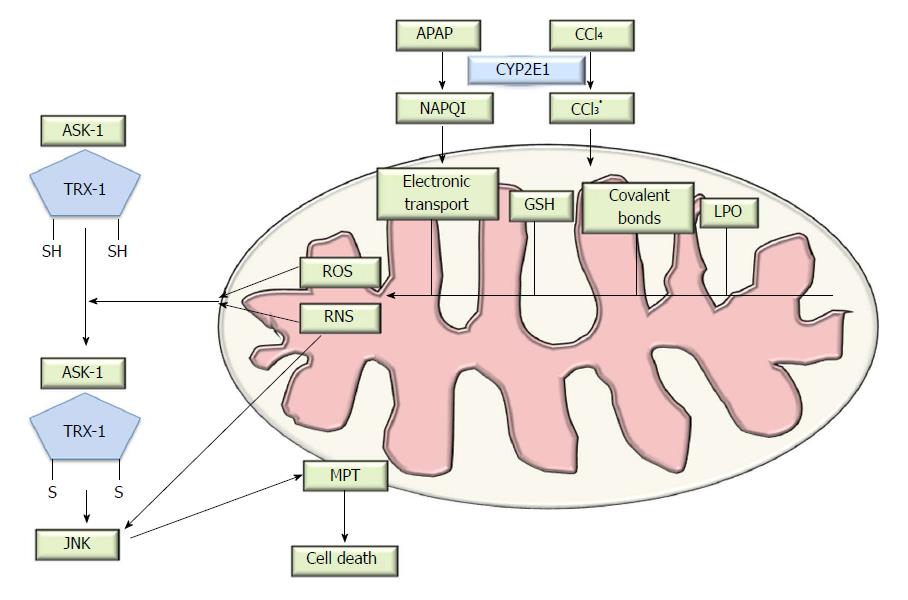Copyright
©The Author(s) 2018.
World J Gastroenterol. Apr 7, 2018; 24(13): 1373-1385
Published online Apr 7, 2018. doi: 10.3748/wjg.v24.i13.1373
Published online Apr 7, 2018. doi: 10.3748/wjg.v24.i13.1373
Figure 1 Pathophysiology of drug-induced liver injury.
Schematic representation of paracetamol toxicology. Metabolism of acetaminophen (APAP) or carbon tetrachloride (CCl4) catalyzed by CYP2E1 enzyme causes the generation of an intermediate reactive compound which causes covalent bonds, glutathione (GSH) depletion and increased in oxidative stress. Thioredoxin-1 (Trx-1) normally binds the N-terminal domain of Apoptosis signal-regulating kinase 1 (ASK1) and inhibits kinase activity. Reactive oxygen species (ROS) accumulation oxidizes and consequently removes Trx-1 from Trx-ASK1 complexes, leading to activation of ASK1 and subsequent apoptosis signalling cascade. Then c-Jun N-terminal kinases (JNK) translocates into the mitochondria and alters of the mitochondrial membrane potential, which triggers cell death. DILI: Drug-induced liver injury. MPT: Membrane permeability transition; LPO: Lipid peroxidation; NAPQI: N-acetyl-p-benzoquinone imine.
- Citation: Ye H, Nelson LJ, Gómez del Moral M, Martínez-Naves E, Cubero FJ. Dissecting the molecular pathophysiology of drug-induced liver injury. World J Gastroenterol 2018; 24(13): 1373-1385
- URL: https://www.wjgnet.com/1007-9327/full/v24/i13/1373.htm
- DOI: https://dx.doi.org/10.3748/wjg.v24.i13.1373









